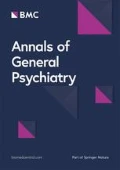Background
The aim of this study is to investigate the psychopathology of adolescents in relation to the use of the internet.
Materials and methods
The sample consists of 339 adolescents (mean age: 15.41 years, SD:1.59, min/max:13/18 ), habitants of the city of Karditsa, Greece. The sample was selected using the method of randomized stratified selection by schools. The Diagnostic Questionnaire for Internet Addiction (YDQ1), based on 8 criteria, was used as a tool to categorize the internet users. Four groups were formatted: no-users, minimal users, moderate users, excessive users. The Symptoms Checklist questionnaire (SCL-90-R2) was used to investigate the psychiatric symptoms. The sample completed also an inventory concerning socio-demographic factors.
Results
The sample was distributed in the 4 groups: non users (32.4%) and according to YDQ as follows: minimal users 49%(0-2 positive criteria in YDQ), moderate users 12.7%(3-4 criteria) and the excessive users 5.9%(5 or more criteria). T-test was used to compare the mean scores of psychopathology between the 4 groups. The group of excessive users presents statistically significant differences: a) with the group of non users in the factors of interpersonal sensitivity (t= −2.79, p=0.006) and of distress of positive symptoms (t= −3.04, p=0.006); b) with the group of minimal users in the factors of interpersonal sensitivity (t= −2.53, p=0.012), psychoticism (t= −1.98, p=0.049 ) and of distress of positive symptoms (t= −2.65, p=0.015). No statistically significant differences were found between the addicted users and the group of moderate users.
Conclusions
Greek adolescents of our sample addicted to the internet use seem to be more sensitive in their interpersonal relationships and to suffer from distress more than those adolescents who have a minimal or no use of the internet.
References
Young KS: Internet addiction: The emergence of a new clinical disorder. Cyber Psychology and Behaviour. 1998, 1: 237-244.
Johansson A, Gotestam KG: Internet addiction: Characteristics of a questionnaire and prevalence in Norwegian youth (12-18 years). Scandinavian Journal of Psychology. 2004, 45: 223-229. 10.1111/j.1467-9450.2004.00398.x.
Author information
Authors and Affiliations
Rights and permissions
Open Access This article is published under license to BioMed Central Ltd. This is an Open Access article is distributed under the terms of the Creative Commons Attribution 2.0 International License (https://creativecommons.org/licenses/by/2.0), which permits unrestricted use, distribution, and reproduction in any medium, provided the original work is properly cited.
About this article
Cite this article
Siomos, K.E., Mouzas, O.D. & Nikiforos, A.V. Addiction to the use of internet and psychopathology in Greek adolescents: a preliminary study. Ann Gen Psychiatry 7 (Suppl 1), S120 (2008). https://doi.org/10.1186/1744-859X-7-S1-S120
Published:
DOI: https://doi.org/10.1186/1744-859X-7-S1-S120

